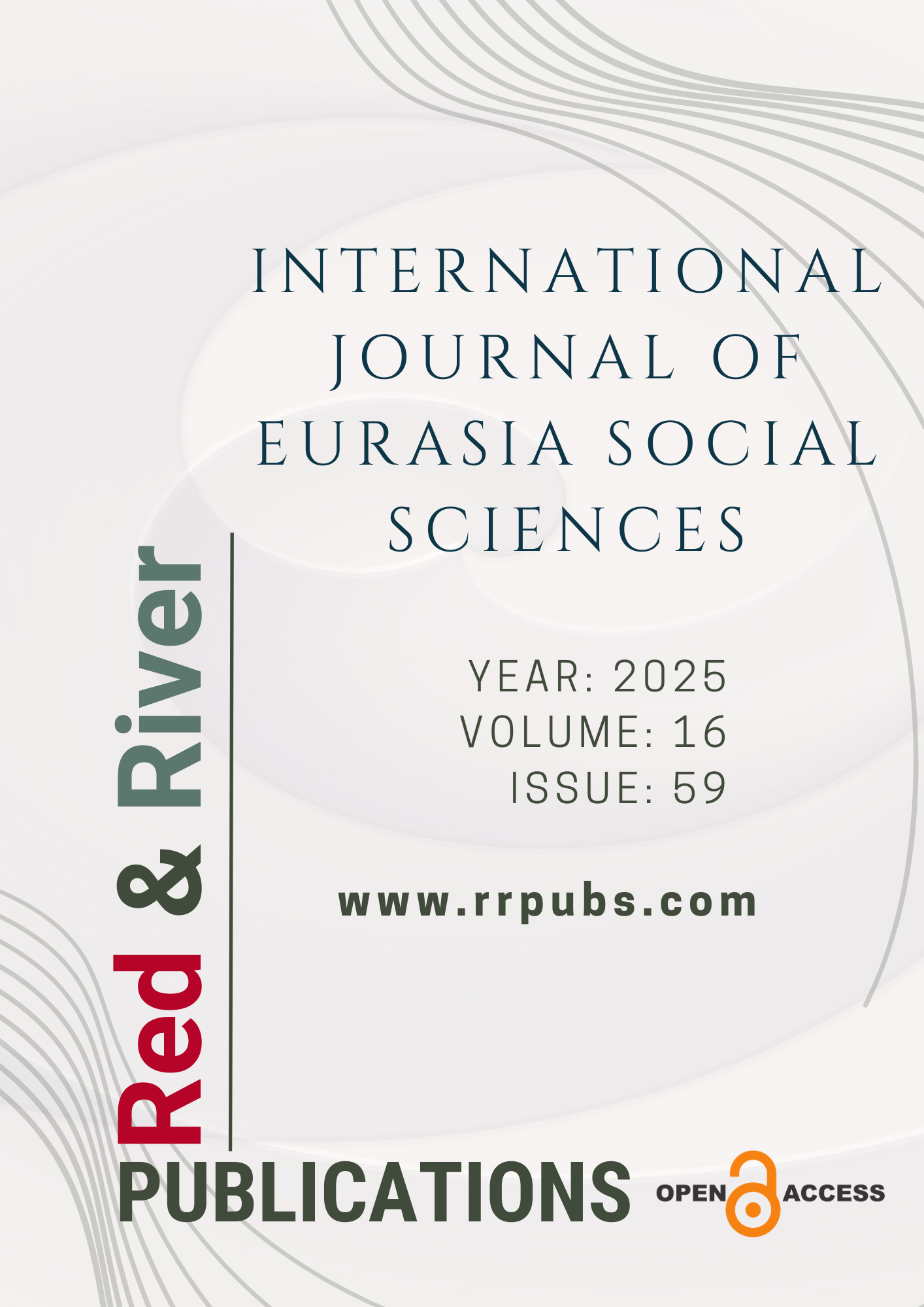Types of examples and teacher preferences: The case of linear equations
DOI:
https://doi.org/10.70736/ijoess.567Keywords:
Mathematics teachers, types of examples, teacher preferences, linear equationsAbstract
This study examines the types of examples that middle school mathematics teachers prefer to use when teaching linear equations and their purposes for using these examples. The research was conducted within a qualitative research paradigm, employing a case study design, and participants were selected using purposive sampling. Data were collected from 28 practicing mathematics teachers through semi-structured questionnaires and analyzed using content analysis. The findings indicate that teachers generally prefer using introductory and standard examples while not utilizing counter and extreme examples sufficiently. Teachers use introductory examples to introduce the topic and capture students' interest, whereas standard examples support conceptual learning. In contrast, despite their effectiveness in addressing misconceptions, counter examples are used to a limited extent. It was observed that teachers have pedagogical concerns and tend to avoid more complex examples. The results suggest that for an effective learning process, teachers should incorporate counter and extreme examples more frequently.
References
Alkan, M. (2016). Matematik öğretmenlerinin kullandıkları örneklerin sınıflandırılması ve öğretimsel açıklama boyutlarıyla ilişkisinin incelenmesi [Yayımlanmamış doktora tezi]. Karadeniz Teknik Üniversitesi.
Alkan, S., & Güven, B. (2018). Ders kitaplarında kullanılan örnek türlerinin analizi: Limit konusu. Turkish Journal of Computer and Mathematics Education (TURCOMAT), 9(1), 147-169. https://doi.org/10.16949/turkbilmat.334530
Bills, L., Mason, J., Watson, A., & Zaslavsky, O. (2006). Exemplification: The use of examples in teaching and learning mathematics. In J. Novotná, H. Moraová, M. Krátká, & N. Stehlíková (Eds.). Proceedings of the 30th Conference of the International Group for the Psychology of Mathematics Education (Vol. 1, pp. 125–154). Prague: Charles University.
Doğan, Z., & Doğan, M. F. (2021). Matematik öğretmenlerinin matematik yaparken ve öğretirken örnek kullanımları. Dokuz Eylül Üniversitesi Buca Eğitim Fakültesi Dergisi, (56), 705-728. https://doi.org/10.53444/deubefd.1240608
İlgar, L., & Gülten, D. (2013). Matematik konularının günlük yaşamda kullanımının öğrencilere öğretilmesinin gerekliliği ve önemi. İstanbul Zaim Üniversitesi Sosyal Bilimler Dergisi, 2(3), 119-128.
Kara, G. (2021). Türkiye’de yayınlanan ortaokul matematik eğitimindeki kavram yanılgıları çalışmalarının incelenmesi [Yayımlanmamış yüksek lisans tezi]. Hacettepe Üniversitesi.
Michener, E. R. (1978). Understanding understanding mathematics. Cognitive Science, 2(4), 361-383.
Mishra, P., & Koehler, M. J. (2006). Technological pedagogical content knowledge: A framework for teacher knowledge. Teachers College Record, 108(6), 1017-1054. https://doi.org/10.1111/j.1467-9620.2006.0068
Patton, M. Q. (1990). Qualitative evaluation and research methods (2nd ed.). Sage Publications, Inc.
Polya, G. (1973). How to solve it: A new aspect of mathematical method (2nd ed.). Princeton University Press.
Rowland, T. (2008). The purpose, design and use of examples in the teaching of elementary mathematics. Educational studies in mathematics, 69(2), 149-163. http://dx.doi.org/10.1007/s10649-008-9148-y
Stake, R.E. (1995). The art of case study research. Thousand Oaks: Sage Pbc.
Şahin, M., & Karakuş, F. (2021). Ortaokul matematik öğretmenlerinin oran ve orantı konusunun öğretiminde kullandıkları örneklerin incelenmesi. Cumhuriyet Uluslararası Eğitim Dergisi, 10(4), 1605-1624. http://dx.doi.org/10.30703/cije.887089
Tall, D., & Vinner, S. (1981). Concept image and concept definition in mathematics with particular reference to limits and continuity. Educational Studies in Mathematics, 12, 151-169.
Tiemann, G.E. (2011). The impact of a school-wide high school advanced placement program and culture on participating students’ high school achievement and engagement outcomes and first year university academic success [Unpublished doctoral dissertation]. University of Nebraska.
Tsamir, P., Tirosh, D., & Levenson, E. (2008). Intuitive nonexamples: The case of triangles. Educational Studies in Mathematics, 69, 81-95. http://dx.doi.org/10.1007/s10649-008-9133-5
Watson, A., & Mason, J. (2002). Student‐generated examples in the learning of mathematics. Canadian Journal of Math, Science & Technology Education, 2(2), 237-249. https://doi.org/10.1080/14926150209556516
Watson, A., & Mason, J. (2006). Mathematics as a constructive activity: Learners generating examples. Routledge.
Yıldırım, A., & Şimşek, H. (2013). Sosyal bilimlerde nitel araştırma yöntemleri (9. baskı). Seçkin Yayıncılık.
Zodik, I., & Zaslavsky, O. (2008). Characteristics of teachers' choice of examples in the context of teaching the concept of function. Educational Studies in Mathematics, 69(2), 165-182. http://dx.doi.org/10.1007/s10649-008-9140-6
Downloads
Published
How to Cite
Issue
Section
License
Copyright (c) 2025 Mustafa Akinci, Ceren Kafalı, Emine Nur Unveren Bilgic

This work is licensed under a Creative Commons Attribution 4.0 International License.

